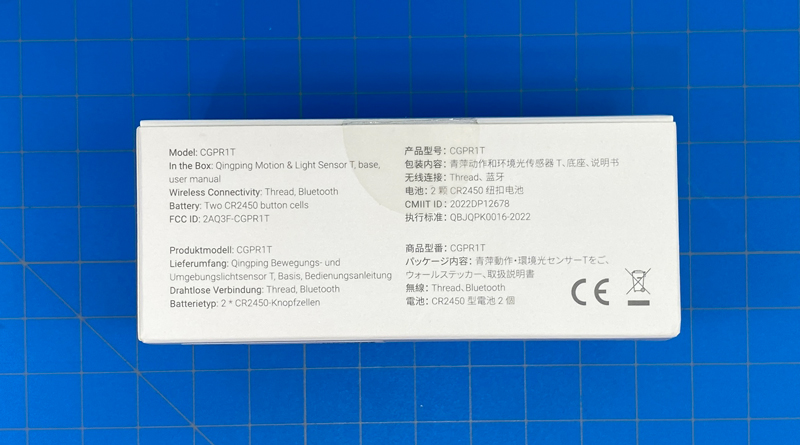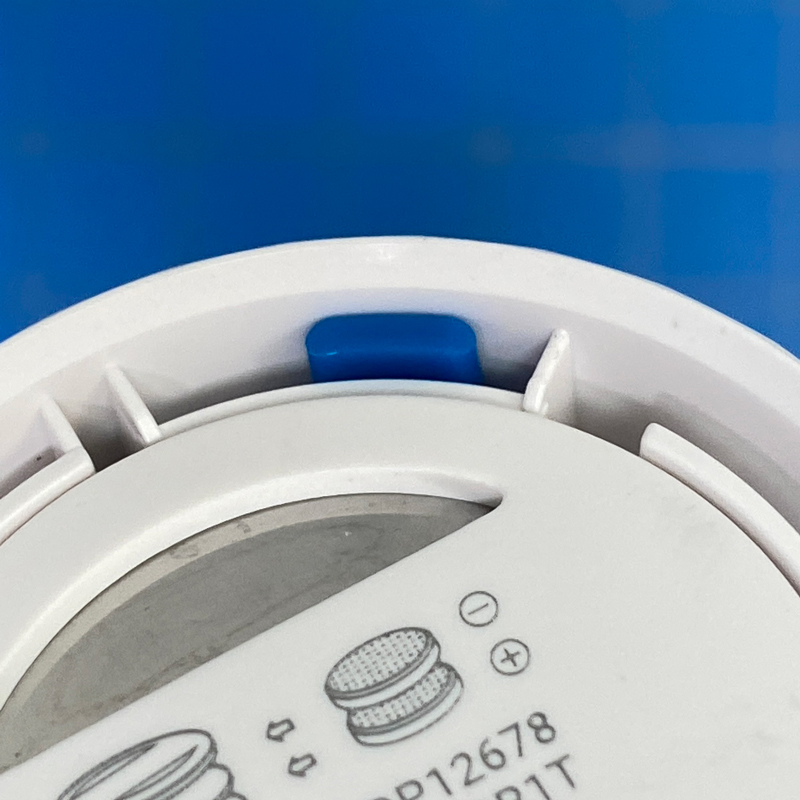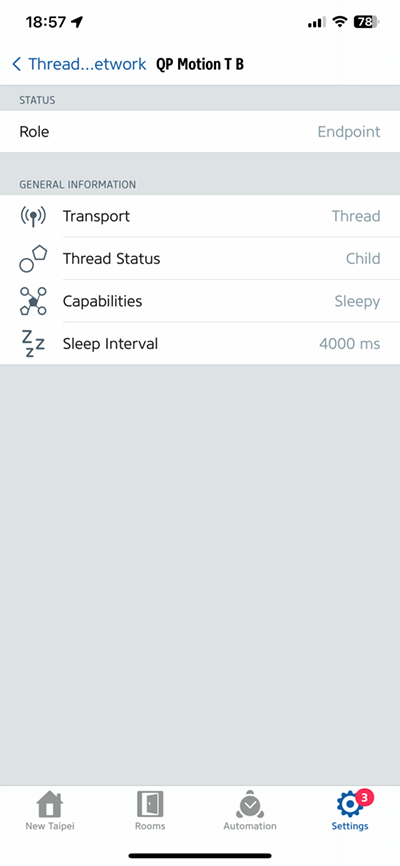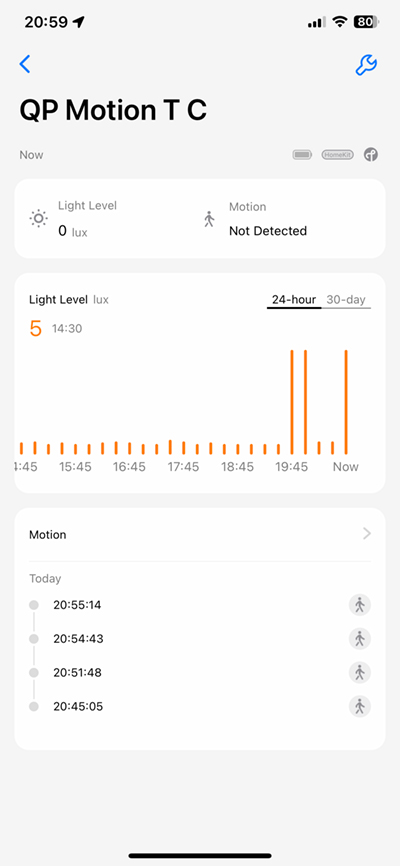Qingping Motion and Light Sensor w/ Thread (review)
If you’ve followed our site and channel for a while, you’ll no doubt be aware of Qingping, whose products we’ve featured a few times on this website. The most recent was the Temperature and Humidity sensor T, with an E-ink display and Thread, an update to their H mode that used Bluetooth. This latest product – the Motion and Light Sensor T – is also an update to an older model, although the previous iteration was not HomeKit compatible. As you might have guessed, The T suffix denotes that this is a Thread sensor. Rejoice! Read on for our thoughts.
BOX | CONTENTS
As with most decent manufacturers, the box follows the same minimalist rules; the product on the front, floating against a white background. Only the Qingping logo and ‘Works with Apple Home’ badge go some way to breaking things up. Looking around the packaging, I immediately noticed there was no Thread logo to be seen. As I’d been sent a review model, I was informed this was probably not the final packaging, hence the missing Thread badge. It’s a Thread device though, trust me!
the back states wireless connectivity uses Thread and Bluetooth. The latter is only used for initial setup and as a fallback option, should Thread go AWOL.
The sensor uses not one, but two CR2450 batteries, which are thankfully already provided.
Aside from the sensor, which we’ll look at in more detail, you get the following; a mounting ball joint, a circular double-sided sticker, and a manual in English, German, Chinese, and Japanese. The ball joint is magnetic, allowing the rear of the motion to hold on magnetically, whilst also allowing the sensor to be both easily angled and removable. It comes with an adhesive backing.
The circular sticker is designed to allow the user to mount the sensor directly to a surface without the need for the ball joint, although this means the sensor can’t be angled.
THE SENSOR
I’m not quite sure how to describe the shape of the sensor, other than it’s a bit like one of those bullet cameras you see on the outside of buildings I guess. Either way, it’s still not large overall, measuring just 38mm in diameter and 36.5mm in depth. When compared to the Eve Motion, which is the only other motion sensor utilising Thread right now, I’d say it’s around 3-4 times smaller.
There’s a HomeKit QR code on the side, which answers the question of whether this uses Matter – it does not, at least not right now. It may get an update for Matter, but nothing has been officially announced so far.
The rear of the sensor has an indent to marry up with the ball joint, which is also the battery cover. The inside of the cover has a magnet that ensures it connects to the wall mount magnetically. This cover unscrews with a light touch, so getting inside the battery compartment is easy.
As it uses two coin batteries, the way these are installed is via a separate battery holder, that can then be removed separately. Once again, this is quite easy to remove, with a small turn anticlockwise. To one side is a small blue tab which is actually the reset/pairing button. This is a little harder to get to, especially if you have very short nails, or have the proverbial ‘sausage fingers’, but a small screwdriver is usually enough.
IN HOME | HOMEKIT
I did mention the name of the product at the start but it’s probably a good idea to reiterate that this is a motion and light sensor. In Apple Home, you get access to both sensors, and both can be used in automations of course.
In the Eve app, as long as you have at least one permanently powered Eve Thread device (Eve Energy for example), you can view some details of your Thread network. In my Thread network, you can see I’ve highlighted the two Qingping motion sensors I have set up, as well as the Thread details for one of those devices.
As these are basically HomeKit over Thread devices, they currently only work with HomeKit. If they do get an update to become Matter over Thread, as has been the case with a few Eve devices recently, then they’ll work with any Matter-capable platform, including Google, Amazon, and SmartThings. However, if you’re a strictly Apple Home user, in essence, this is more than good enough.
Also note these are labelled as ‘endpoint'(s), which means these can’t share or extend the Thread network, only receive the signal. This is due to them being battery-powered. If they were in a position to be ‘routers’ (i.e. helping spread the network and pass on info between devices and a Border Router) the batteries would last weeks at best. This is why only mains-powered devices are generally set up as Thread Routers.
THE QINGPING+ APP
I do like the Qingping+ app, probably more than most other proprietary apps, although I’ll be the first to admit I don’t use it that often. My workhorse is the Home app, and that’s that. Still, if you really want to keep track of motion and light data, this is the app for you. You also don’t have to create an account and still access pretty much everything. It’s so well laid out, I find it a joy to use, with quick look cards for both sensors, as well as 24-hour and 30-day readings for light.
Motion detection history is also very detailed, although possibly not as nice to look at, as it’s just a list. I should note that as Thread and Bluetooth are about the same when it comes to how much data can be transmitted, it can take a while to download the historical data to the app. You can also export the data as a .csv file that’s sent via email. there aren’t too many options for you to change, but one option is to change the countdown period, which offers as little as five seconds before resetting, to five minutes, with the first 60 seconds offered in five-second increments, and thereafter, increments of one minute.
Whilst all motion sensors have a countdown or cooldown period, many sensors in this countdown will be ‘blind’ and won’t detect motion or the lack of it during that period. The Qingping (along with the Eve, Hue motion and a couple of others) allow the motion sensor to continuously detect motion or no motion during that time, which can be quite handy in many circumstances.
So, if for example, you have your Qingping set to 45 seconds between the moment it detects motion, and resetting to no motion, if you move in front of the motion sensor, that 45-second countdown will restart. Sensors that don’t have this ability will just begin the countdown until it’s complete, and then become active again.
SENSOR PERFORMANCE (MOTION AND LIGHT)
In my tests (which you can see in the video review) the motion sensor was pretty much on par with the Eve Motion. I did notice that the detection range was a little shorter than I’m used to, but then I always found that the original Aqara motion sensor always reached a little too far for my use cases, so this is no bad thing in my opinion. I have one situated in the corridor, and another near the doorway to the main bedroom and so far I’ve encountered no issues as such, which includes any instances of automations failing to trigger, or indeed a lost connection.
The light sensor did stump me a little, however. In the tests I performed, I compared it to the light sensor built into the Hue motion, Eve Motion, and a dedicated Mijia motion sensor that uses Zigbee. At low levels, all three were comparable in their readings, but in medium and bright light, the Qingping displayed much higher readings – pretty much double the readings from the other three, which for the most part were all within the same ballpark for all levels of light. This doesn’t necessarily mean that the Qingping is giving false readings as such – it could actually be more accurate perhaps, but if three of the four sensors match up, then it’s probably more likely they’re providing accurate readings. This shouldn’t matter in one sense, as assuming you’d solely use this particular light sensor in a room without another light sensor, you simply adjust your automation to work at the levels the Qingping provides, so it’s a case of adjusting in essence.
COMPARISONS TO THE EVE MOTION
It seems fair to compare this to the only other device with much the same features, namely a device with Thread, and separate motion and light sensors. That would be the Eve Motion of course.
- The Eve is currently priced at US$49.95, which is double the price of the Qingping T, so that can have a lot of bearing on some peoples’ choices.
- They both use Thread, but only Eve can offer a Matter update, which makes it more enticing for users of platforms aside from Apple Home, and those that might run more than one platform.
- Size is a consideration, so if you’re looking for small and discreet, Qingping has that on its side.
- Both can be mounted, but Eve only offers hanging it from a screw or nail in a wall, whilst the Qingping can be stuck anywhere, whilst also offering adjustable angles.
- Eve offers an IPX3 rating, which isn’t totally outdoor/weatherproof, but does offer a measure of water resistance that Qingping doesn’t.
- Finally, Eve has options to adjust the sensitivity of the motion detection, which isn’t offered by Qingping.
As you can see, both have their positives and negatives.
IN DAY-TO-DAY USE
I’ve had two Qingping motion sensors running in my home for a while now, and initially, I did have two instances where one went offline. I never got to the bottom of the reason why. I did move the motion sensor around the apartment a fair bit, so losing connection to the Thread Border Router it may have initially been connected to could be the reason, but now they’re both in a regular location and thankfully this has not been an issue since, for either of them.
Personally, I prefer the design over the Eve motion, partly due to the size, and ease of mounting it at different angles. Having it Matter compatible is low on my list of priorities, even though I think this is ultimately the way things should be going, so in HomeKit it has performed well enough, with no hint of lag normally associated with Bluetooth-based sensors. I didn’t have the previous Bluetooth version of this sensor, as it wasn’t HomeKit compatible, so it’s hard to measure the change, but let’s be honest; Bluetooth has never been up to the job when it came to speedy response times, so I have no doubt it’s an improvement.
I like their app, even if I don’t use it too often, although it does come in handy with my Qingping Air Monitor Lite (video HERE, review HERE), as I like to keep tabs on both PM2.5 and CO², which using this app can be an eye opener, especially with the latter. Having not had these long enough to see how well battery life is, I can’t tell you if it’s good or bad, but I am a little surprised to see it use two of the larger CR2450 batteries, although I’m equally happy they didn’t go for the CR2430 which seems to be harder to buy in shops than the CR2450.
All in all, it has been fine for my use cases, and even though the Aqara FP2 has highlighted the shortcomings of PIR sensors like this one, they do still function well for basic tasks.































Would have been nice to include a pic that shows its size. Or mention how big the squares are on the background grid.
Fair comment. I’ve now added the dimensions, but to save you from going through the article, I’ll put them here – 38mm in diameter and 36.5mm in depth. Hope that helps.